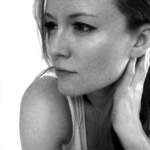Welcome to our first lesson! I first came to this idea of origins as evolving when examining my own: a childhood shuffling between two families, my mother’s Mexican family on the U.S.-Mexican border and my father’s family whom are, for the most part, Orthodox Jews in Jerusalem. My mother herself converted from Catholicism to Judaism before I was born, and while I was raised in an observant Jewish household, the influences of border culture and my Mexican relatives continually made an impression on how I viewed the world. Those two very different geographies were never as simple as leaving for another, and this made for quite an often contradictory, sometimes explosive evolution of self as I negotiated more than just identity among my extended families. Uneasy, uncertain, devil may care: that has been my world.
After many years of looking toward the pasts of my heritages, I have come to the conclusion that origins are not past at all. Rather, origins are very much alive. Origins are a living thing, and often both a resolute and reactive manifestation of personal racial, ethnic, sexual and religious beliefs and ideas. And above all, origins do not exist in a vacuum; no matter how resolute our individual beliefs, we each react to the world and sometimes, we change, both ourselves and our own point of departure. In this case, do origins themselves not evolve, especially for poets?
This week we will focus on the idea of Belief. Let’s take a look at NPR’s popular series “this i believe,” which has published and produced essays on the idea of Belief, ranging from a 14 year old’s experience with Asperger’s Syndrome to novelist Amy Tan’s making peace with her belief in ghosts to one doctor’s creed that “Health is A Human Right.” Feel free to explore the series, reading or listening to the different essays, before continuing onto the selected poems.
Reading Assignments
 “Self-Portrait” by Adam Zagajewski As Zagajewski contemplates time and self, constancies and preferences, that compose his “self-portrait” at this point in his life, he ends on an examination of his own “childhood”/origins as poet—not of “ocean” but “air”—and his growth as both poet and human. “Self-Portrait” by Adam Zagajewski As Zagajewski contemplates time and self, constancies and preferences, that compose his “self-portrait” at this point in his life, he ends on an examination of his own “childhood”/origins as poet—not of “ocean” but “air”—and his growth as both poet and human. |
 “Creed” by Meg Kearney Like Zagajewski, Kearney looks at both the significant and seemingly minor details of beliefs that shape how she experiences and views the world. We are going to play with this idea, but with a twist. “Creed” by Meg Kearney Like Zagajewski, Kearney looks at both the significant and seemingly minor details of beliefs that shape how she experiences and views the world. We are going to play with this idea, but with a twist. |
 Here are some more poems that explore the idea of belief in various ways: “Ships” by Tomaž Šalamun (trans. by Brian Henry) “On Living” by Nazim Hikmet “Zone” by Guillaume Apollinaire (trans. by Donald Revell) “Walking Around” by Pablo Neruda (trans. by Robert Bly) Here are some more poems that explore the idea of belief in various ways: “Ships” by Tomaž Šalamun (trans. by Brian Henry) “On Living” by Nazim Hikmet “Zone” by Guillaume Apollinaire (trans. by Donald Revell) “Walking Around” by Pablo Neruda (trans. by Robert Bly) |
Writing Exercises
Writing Exercises for Your Own Exploration and Reflection
- Read or listen to 7-year-old Tarak McLain’s “Thirty Things I Believe.” Now, looking back at your own past (whether back to you own childhood or as recent as a year ago), list 10-15 things you no longer believe in. They can range from small to large in significance, and of course are not limited to religious beliefs.
- Choose 7 out of the 15, and write 1-3 sentences explaining why, where and/or how you lost these beliefs. If you need to explain more for some, that’s fine.
- Choose 5 out of the 7, and write 1-3 sentences how losing these beliefs has affected you as a person and a poet now. How are you different? How has your writing changed? Again, if you need to explain more for some than others, that’s fine.
*Once you’ve completed these exercises, review in depth your answers to all 3.
Writing Assignment for Submission Using your answers from the previous 3 exercises, write a poem about belief(s) lost. You can focus on one of belief in particular, or you can write a poem more like Kearney’s “Creed,” exploring multiple beliefs. You can also write a “Self-Portrait” in the vein of Zagajewski, and how losing certain beliefs has shaped you as a poet and person. And lastly, you can use any of the poems from Reading Assignment #3 as inspiration as well.
 Born to a Mexican mother and Jewish father, Rosebud Ben-Oni is a recipient of the 2014 NYFA Fellowship in Poetry and a CantoMundo Fellow. She was a Rackham Merit Fellow at the University of Michigan, a Horace Goldsmith Scholar at the Hebrew University of Jerusalem and a graduate of the Women’s Work Lab at New Perspectives Theater in NYC. She is the author of SOLECISM (Virtual Artists Collective, 2013) and an Editorial Advisor for VIDA: Women in Literary Arts. Her work appears in POETRY, The American Poetry Review, Arts & Letters, Bayou, Puerto del Sol, among others. She writes weekly for The Kenyon Review. Rosebud is the founding talent and voice behind “Evolving Origins.”
Born to a Mexican mother and Jewish father, Rosebud Ben-Oni is a recipient of the 2014 NYFA Fellowship in Poetry and a CantoMundo Fellow. She was a Rackham Merit Fellow at the University of Michigan, a Horace Goldsmith Scholar at the Hebrew University of Jerusalem and a graduate of the Women’s Work Lab at New Perspectives Theater in NYC. She is the author of SOLECISM (Virtual Artists Collective, 2013) and an Editorial Advisor for VIDA: Women in Literary Arts. Her work appears in POETRY, The American Poetry Review, Arts & Letters, Bayou, Puerto del Sol, among others. She writes weekly for The Kenyon Review. Rosebud is the founding talent and voice behind “Evolving Origins.”



